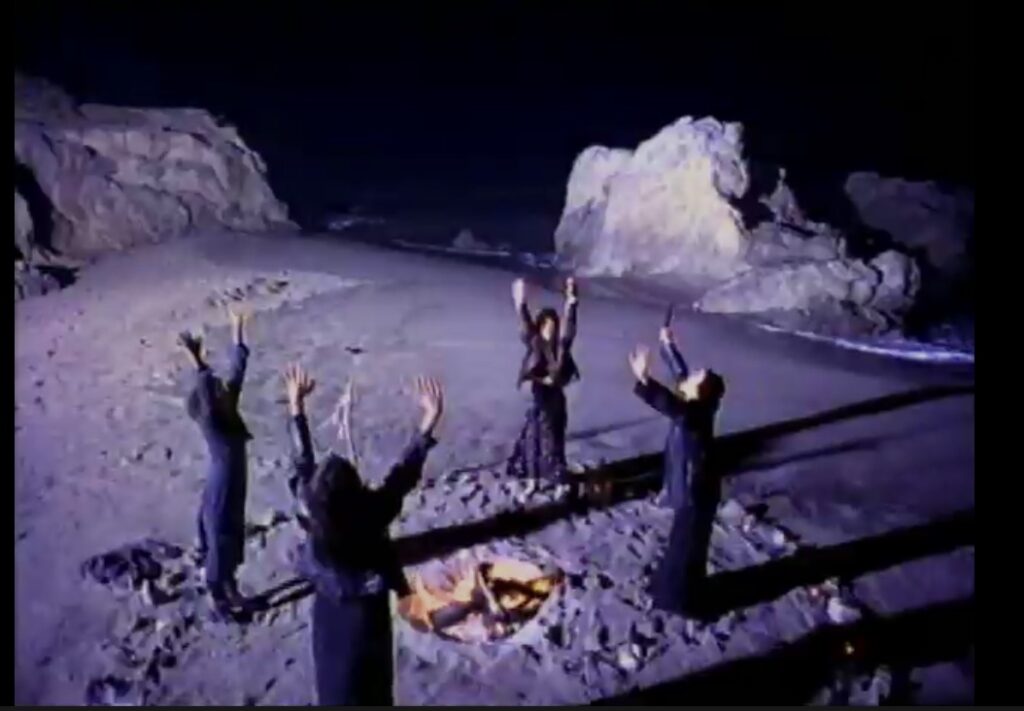[HuffPost] Double, double toil and trouble ― watch the rise of witchery bubble. Those interested in religion and spirituality have noticed that 2018 was a landmark year for the visibility of ancient natural religions, and those who are drawn to their principles and practices. Call it the Season of the Witch. While there are male witches, and always have been, the latest upsurge in witchcraft is largely a chick-and-genderfluid thing ― a spiritual seeking turbocharged by affinity with the supernatural and belief in the sacred feminine and the divine androgyne.
Maybe you’ve noticed the resurgence of interest in ethereal songwriter Stevie Nicks and ’90s teen cult fave “The Craft,” and noticed that every time you see your teenage cousin, she’s walking around the house with a smudge stick of white sage and a deck of SerpentFire tarot cards wrapped in a silk scarf. Maybe you saw one of the many news reports about the hex that a group of witches placed on newly appointed Supreme Court Justice Brett Kavanaugh in a Brooklyn occult shop.
Or perhaps you’ve encountered a few of the numerous articles on the mainstreaming of the witch, like Naomi Fry’s piece for The New Yorker or a spate of recent Newsweek pieces. And if you’re a social media creature, you’ve no doubt observed that via Instagram, Twitter and especially Facebook, witches have taken messaging, organizing and education into their own hands, producing a number of witch-related gathering spots, websites, and books, books and more books. Certainly, not everyone with a pouch full of crystals and a pendulum is a witch ― the #WitchesofInstagram hashtag, which is on over 2 million photos, brings up scores of pictures of practitioners who run the gamut from dabblers sharing jokey memes about being a Leo to lifelong Wiccan artists peddling their painstakingly crafted candle magick wares.
Some women who might have been once attracted to yoga for solace and subtly subversive self-care are seeking stronger brew.
The modern witch, as we would recognize her today, is a mid-20th-century phenomenon, as laid out in a lovely Boston Review piece by journalist Jesse Kindig. “In their 1968 manifesto,” Kindig writes, “the women’s liberation activists from W.I.T.C.H. (Women’s International Terrorist Conspiracy from Hell) proposed that ‘A witch lives and laughs in every woman. She is the free part of each of us.’ It is this history ― from 1486 on ― that explains today’s global feminist protest chant, ‘We are the granddaughters of all the witches you could not burn!’”
That such a heady sentiment ― suggesting, at once, female power, resistance, wile, wisdom, mystery and no small amount of fearlessness ― is finding unprecedented popularity comes as no surprise in our current cultural moment. As an archetype, the witch stands firmly with other women, yet is bowed by no man. She hews to ancient tradition without being called to conform ― an untamed spirit, steeped in social responsibility, who roams free of corporatization, government interference or oppressive boy germs. The witch has always walked among us, only now she’s re-emerging as a cultural and political force with an aesthetic and an agenda.
New Age, natural and alternative spiritual practices have come and gone as trends in America ― tea leaves, astrology, palmistry, séance parties, telephone psychics and mass-market Ouija boards. In the 1990s, yoga exploded as a means of transformation and restoration and engagement with the higher self, but over the years, it has assumed a seriously Range Rover Lululemon bougie vibe (not to mention troubling issues of cultural appropriation, ectomorph-worship, ableism and a glaring sheen of whiteness). So some women who might have once been attracted to yoga for solace and subtly subversive self-care are seeking stronger brew.

(NurPhoto via Getty Images)
Of course, as it ever must be under capitalism, big business has pegged Paganism and witches as a trend and tried to slap its slimy profit-seeking tentacles on those pentacles. Pop culture has its place as a message-bearer by which many future witches are first exposed to the craft. Says practicing witch Sara Coughlin in a piece published in Refinery29: “Where now we have The Chilling Adventures of Sabrina, American Horror Story: Coven, and a Charmed reboot, I grew up with Buffy the Vampire Slayer, The Craft, and Practical Magic.”
But the commercialization of ritual items has proved a bridge too far. Sephora caused an uproar in September when it announced a plan to market and sell a Starter Witch Kit, which, to a serious Wiccan or Yoruba practitioner, must feel akin to sacrilege. Can you imagine, say, Hallmark stocking a beginner’s baptism kit? (Undaunted, Allure magazine stepped into the beauty biz witch void by offering an article on color magick, with corresponding links to yellow Versace perfume, red Yves Saint Laurent lipstick, black Origins charcoal mask and the like.)
At heart, the current surge in witchcraft among American women and femmes is about the power of female healing and uprising in a world that seeks, in every way, to harm us and tamp us down.
Not surprisingly, the media focus on witches features white women almost exclusively (insert requisite “basic witch” joke here) but this white-washing, while predictable, is misleading. Witches of color abound, practicing within a number of traditions, including Santeria, Wicca, Yoruba and Hoodoo, or a combination thereof. The illumination of traditions and customs, and the cultures from which they come, is feminist intersectionality at its best. Despite the mainstream media oversight, women of color have staked out a significant place on social media platforms and blogs. If you like to follow your Instagram healers but you don’t follow the ravishing sisterly warmth of The Hood Witch and the uplifting meme wizardry of astrologer Chani Nicolas, you’re missing out.
[Editor’s Note: This article was written by Lily Burana and originally published at HuffPost]











